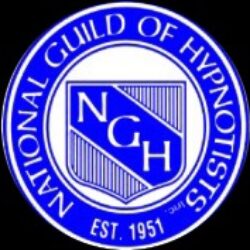Applying to positions shown on LinkedIn Jobs? You’ve probably noticed that a resume and cover letter can be uploaded for each application.
A handy tool for job seekers, LinkedIn Jobs offers a “Apply with your Profile” option, which allows you to show your interest with just one click.
However, you’ll benefit from providing a resume to employers, even though they can quickly see your LinkedIn Profile. Why?
Because your resume (when customized properly) can be closely tuned to match employer job requirements and match up with Applicant Tracking Systems (ATS), while your Profile should always be set up to garner employer attention.
Here are 3 steps to create a sharp, focused message on both your LinkedIn Profile and resume to maximize the response you receive from applying to LinkedIn Jobs:
1 – First, tune your LinkedIn Profile to represent ideal positions.
Your Profile should already be fit for review, especially since employers and wobb jobseekers recruiters are constantly scouring LinkedIn for talent.
But if you haven’t populated all sections of LinkedIn with appropriate keyword content, you’ll struggle to make a good impression when applying to job postings (and employers will have a harder time finding you!).
To get the best results from applying to jobs, while receiving the maximum amount of traffic on your Profile, fill in these highly indexed sections of LinkedIn with as much keyword-specific detail as possible:
– Headline (with meaningful information other than the default current job title)
– Summary
– Experience (including job descriptions and achievements)
– Education
– Certifications
– Skills & Expertise
– Projects (which allow you to provide drill-down detail into initiatives you’ve completed in each job)
– Contact Information (using both a mobile number and email address, both of which are surprising omissions from many Profiles)
– Honors (yet another section where you can note related expertise and skills)
When adding data in each of these areas, use achievements and metrics that demonstrate success in past jobs (just as you would in your leadership resume). You’ll need to specify as many keywords as possible to build a solid base of information that matches the types of jobs you’re pursuing.
Pull in terms related to your desired industry, career level, job title, and technology abilities–gleaning keyword content from job postings and other Profiles that match the position you want.
Even if you’re pursuing different types of jobs, your Profile should contain a reasonable match for each of your goals.
2 – Next, create several versions of your resume, with adjustments for emphasis on specific skills.
Since many job hunters pursue career opportunities in a variety of related roles, you’ll need slightly altered resumes to reflect the requirements for different jobs (whether posted on LinkedIn or found elsewhere).
For example, a candidate with both sales and marketing skills might find postings for a Marketing Director, Sales & Marketing Manager, and Business Development & Marketing VP.
In this case, it makes sense to prepare 3 resumes, each with varying emphasis on sales, promotional, or business development skills. These different resumes can also be used downplay the less relevant facts of the applicant’s background, replacing success stories related to one set of skills with achievements more closely matched to the job specification.
An added benefit? Creating several different resume versions will also allow you to put resume headlines and taglines at the top of your document–increasing your resume’s appeal to the right audience.
3 – Now, apply to the LinkedIn Job posting with your most closely matched resume.
Before sending out the resume, look through the LinkedIn job description to take note of the keywords listed in the position requirements, using a word cloud application.
Follow these steps for each job you’re targeting:
a) First, paste the job description into Wordle (Wordle.net) or Tag Crowd (tagcrowd.com) to obtain a word cloud pattern.
b) Next, do the same with the resume you’ve selected for use.
c) Now, compare your Wordle results. If you see patterns indicating substantial discrepancies, take some time to adjust your resume to prove you fit the requirements of the posting.
Taking these actions to tweak your resume can result in a closer match with employer ATS systems, which are often part of the screening process used by companies advertising jobs on LinkedIn.
Be sure to interject keywords into resume sentences for better ATS matching. Compare your newly revised resume to the same word cloud when finished.
While a perfect match will be nearly impossible, you should see a significant increase in the alignment between the posting and your customized resume. Also, revisit your LinkedIn keyword strategy if needed to ensure it will make the right impression on employers.
You can also include a cover letter in the resume file (pasted directly in front of the document), with the same changes for improved keyword content. Then, upload the resume document as a reply to the job posting.
With each application, keep track of your responses as a measure of your LinkedIn Profile-Resume matching efforts. You may need to adjust your methods for future job applications.

